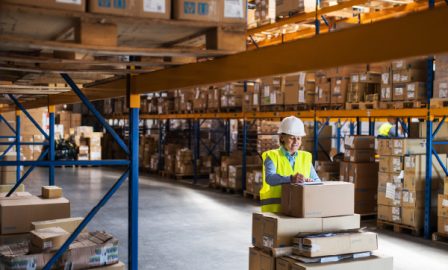How Will Amazon-Whole Foods Impact Wholesale Distribution?
The Amazon acquisition of Whole Foods is one of the rare deals with game-changing impacts to the most tried-and-true strategies, processes, and technologies in the industry. As wholesalers navigate the evolved landscape, questions abound. How will this multibillion-dollar acquisition impact wholesalers? How can the industry respond? We offer our insights as the news continues to develop.
How Amazon Acquisition Impacts Wholesale Distribution
This deal, coupled with Amazon’s recently announced AmazonFresh food delivery service and their AmazonGo shopping concept, represent a transformative leap forward. With 460 storefronts now available through the upcoming acquisition, the distribution giant could soon leverage not only the traditional grocery storefront, but the storage capability to support the food delivery services and no-line, no-checkout shopping experience.
These storefronts could also serve as micro-distribution centers. Whole Foods locations may now not only be the place to shop for the “finest natural and organic foods available”, but also a hub to provide distribution to restaurants and other grocers, or to support the e-commerce giant by offering a convenient Amazon.com pick-up and returns location. In effect, this could solidify an omni-channel presence or enable cheaper last mile distribution.
But, the micro-distribution center offers even greater opportunities. Located in primarily wealthier urban locations, Amazon, who has already experimented with drone deliveries and autonomous trucks would have a natural launch location. The micro-distribution center will also provide Amazon Business, Amazon’s wholesale distribution business model the same day or next day capability it has required to become a stronger competitor in the wholesale distribution business, potentially at lower costs to serve.
Beyond the potential distribution models, Amazon will continue to leverage increased buying power and lower volume cost, provide a greater product selection, and now have the infrastructure for faster delivery completely by-passing wholesalers. The faster to market advantage of traditional wholesale distribution will be threatened by this new model. To remain relevant in the new frontier of retail, the wholesale distributor must be ready to differentiate their offerings and services through a deep understanding of their industry and customers.
How Wholesale Distributors Must Respond
While the exact ramifications of this deal continue to play out, there are considerations wholesalers should bear in mind as tactics for increasing their value proposition. For instance, wholesalers have already expanded offerings and conveniences to maintain their market share. They continue to grow complementary services; Sysco, for instance, offers customers one-stop shopping experience including bill pay and delivery tracking. McLane Company provides differentiated customer service through My McLane, a web portal providing their customers access to information pertaining to their business and relationship with McLane. Becoming an extended supply chain for the retailer and in some cases, the end consumer, demonstrates the value of and need for the wholesaler.
As businesses struggle to leverage the power and promise of data and analytics, wholesalers can fill that void and provide actionable intel for their customers. Defining segmentation and pricing models through data analytics will ensure premium customers are receiving the appropriate price breaks while maintaining a thin margin, greater service levels, expanded offerings, and a seamless, transparent flow of goods and information.
Wholesalers have always focused on good customer service, but now’s the time to take that to the next level through targeted marketing and contextual e-commerce experiences backed by analytics. Integrating back office and front office technologies provides the customer with the necessary transaction, inventory, and account details in various formats.
Predictive analytics on the flow of goods enables the wholesaler to better align with manufacturers and retailers to provide the appropriate product mix. It allows the wholesaler to be more agile by understanding buying trends much faster. Understanding their customer and industry, and not just being a conduit of products, allows the wholesaler to become vital within the supply chain.
Wholesalers must continue to strive to reach and deliver where others can’t, buy and offer an industry-specific product portfolio others can’t, and provide premium services that only they can. It’s now a business imperative to achieve their specialization in efficient supply chain practices, and at a price that is unmatched by anyone. They must strive to differentiate themselves within the competitive market by utilizing the technology and analytics now available. It may not sound easy, but what used to be optional is now a must.
If you found this information interesting, subscribe to our blog to receive the latest insights:



